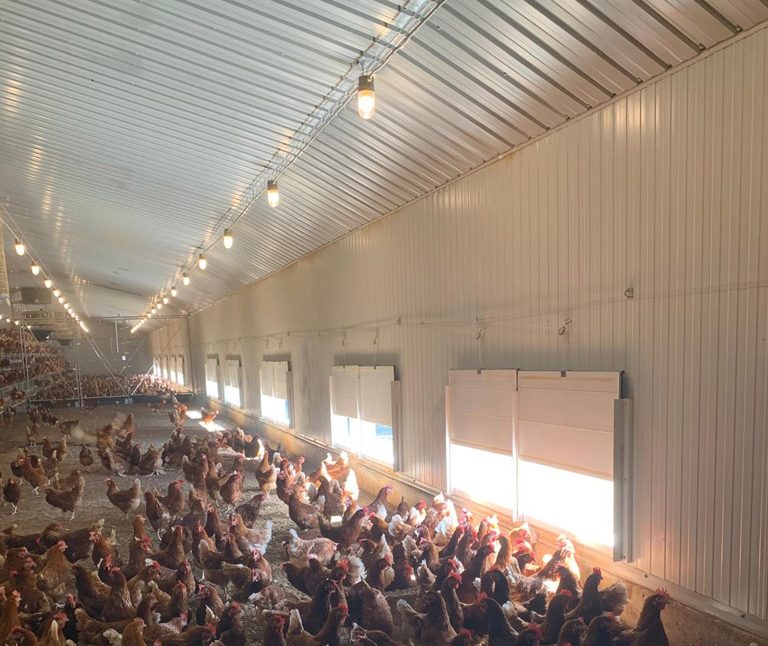In the poultry industry, the effective use of space is not only a matter of economic efficiency but also crucial for the health and productivity of the birds. With the constant pressure to increase production within limited land resources, optimising space in poultry buildings has become an essential skill for farmers. This article explores practical strategies to maximise space while ensuring the welfare of poultry, ultimately enhancing productivity.
Understanding Space Requirements
Before delving into optimisation techniques, it’s important to understand the basic space requirements for poultry. These are influenced by several factors, including the breed of the bird, its stage of life, and the type of poultry system (e.g., broiler, layer, or breeder). Overcrowding can lead to serious health issues, reduced growth rates, and lower egg production, so adhering to recommended space standards is crucial.
Vertical Integration: The Use of Multi-tier Systems
One of the most effective ways to maximise space in poultry buildings is through vertical integration. Multi-tier systems, especially popular in egg production, allow for several layers of housing within the same footprint. These systems can effectively double or triple the capacity of a poultry house. Ensuring proper ventilation and access for management in these taller systems is crucial.
Efficient Layouts and Design
The internal layout of a poultry building plays a pivotal role in space optimisation. Designing a layout that facilitates easy movement of birds and staff can significantly increase efficiency. This includes strategic placement of feeders and drinkers, optimised bedding areas, and streamlined pathways for routine checks and maintenance.
Adjustable Environments
Implementing adjustable partitions and flexible housing systems can adapt space usage based on the growth stage of the poultry. This flexibility allows farmers to expand or contract living areas, accommodating the changing needs of growing birds or different batches without compromising health standards.
Technological Enhancements
Modern technology offers numerous ways to enhance space utilisation. Automated feeding and watering systems reduce the need for space-consuming manual systems. Moreover, sophisticated monitoring technologies can help farmers assess and optimise the use of space, based on real-time data on bird movement and density.
Regular Health Monitoring
Maintaining optimal health and productivity goes hand-in-hand with space management. Regular health checks and monitoring can prevent diseases that might otherwise spread quickly in densely populated environments. Implementing a robust health monitoring system ensures that any increase in stocking density does not negatively impact the birds’ well-being.
Case Studies and Practical Examples
Examining successful implementations can provide valuable insights. For instance, a medium-sized poultry farm in the Midwest England successfully transitioned to a multi-tier system, which not only increased their production capacity by 40% but also improved egg quality and bird health due to better-managed space.
Conclusion
Optimising space in poultry buildings is a multifaceted approach that requires careful planning and execution. By understanding the space needs of poultry, employing innovative building designs, and integrating technology, farmers can significantly enhance their productivity. This not only leads to higher outputs but also ensures a sustainable and animal-friendly farming operation. With the right strategies, the balance between maximising space and maintaining animal welfare can be achieved, leading to long-term success in the poultry industry.


